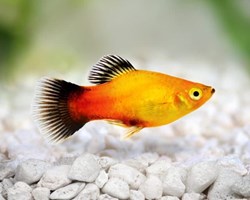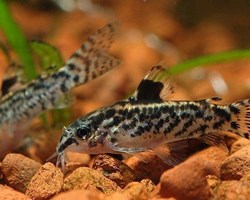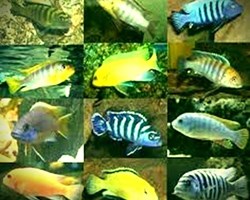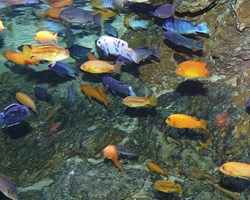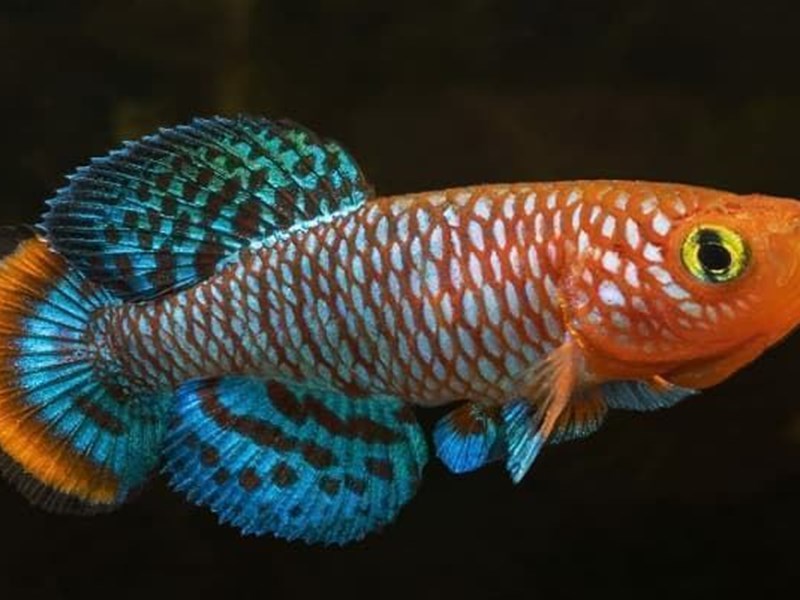
DESCRIPTION:
Care level: Easy-Difficult: depends on the species.
Temperament: Most species are peaceful.
Color form: Vividly colored
Life span: 3 months – 5 years (depends on the species)
Size: 2 to 9 cm.
Diet: Carnivorous
The family: Cyprinodontiformes
Minimum tank size: 75 liters per pair.
Tank preparation: Very simple; bare floor, minimal light, sponge filter
Compatibility: Safe community with caution (species dependent).
The Cyprinodontiformes, commonly known as Killifish, is a family of fish that comprises more than 1,250 species; these species are classified into ten different groups.
Their teeth are long, curved and pointed.
Most species have round scales and no barbels.
Many of these species are slender and pike-shaped, making them great swimmers.
Some have a more cylindrical body with short, rounded fins and others have long, broad fins.
The Killifish family is a very diverse and widespread group of fish.
One thing most Killies have in common is bright colors and vivid patterns.
Males are much brighter than females, and most of their heads are flat on top.
Body shape varies by species, but all have a dorsal fin located towards the rear half of their body.
In most species, males also have larger dorsal and anal fins.
They measure between 2.5 to 15 cm in size.
Some of the smaller species include the Dwarf Madeka (Oryzias minutillus) and the Lampeye Hummingbird (Poropanchax myers) are less than an inch in length.
An extreme example of a larger killer fish is the Orestias (Orestias cuvieri) which can grow to over 10 inches.
Perhaps the most useful way to help decide what kind of species you want is to look at the characteristics and care requirements of individual species.
Most Killifish are peaceful and get along well in community tanks; however, males can be aggressive towards each other.
If you are experienced and want to keep a group of Killies in a larger tank, you can do so as long as you provide plenty of retreats and hiding spaces.
Alternatively, you can have a single male Killifish in each aquarium, and avoid keeping any similar looking male species and you can keep any number of females together.
Killies are usually good community fish and can be kept with other small, peaceful species that require similar water conditions, such as Neon Tetras and Rum Nose Tetras.
There is one vital behavioral trait of Killies that you learn about while setting up your aquarium, almost all of them are amazing jumpers.
For this reason, you must make sure to cover your aquarium with a hood and ensure its safety.
Given the small size of Killies, they can jump through very small spaces.
Aphyosemion australe (Rachow, 1921):
Family Nothobranchiidae, up to 6 cm.
This species comes from the coastal area of Gabon, near Cape Lopez. There are two varieties, chocolate and gold. The latter of an orange-gold color.
Standard aquarium conditions pH 7, hardness between 5 and 10 dgH. preferably pH 6.5 with hardness between 2 and 5. Temperature between 22 and 25ºC.
It accepts without problems dry food as well as frozen.
It can compete with males of the same species and color but they do not go beyond slight clashes. the females do not have the color of the male but maintain the same pattern of points and a very elegant line.
One of its characteristics is the lyre tail.
Spawns mainly by hanging the eggs from the roots of Thailand Fern, Riccia or other floating plants. Egg incubation period at 23ºC 3 weeks.
Fundulopanchax Gardneri, (Boulenger, 1911):
Family Nothobranchiidae, up to 6.5 cm.
It comes from Nigeria, although some populations populate the West of Cameroon. It has several subspecies, the most important being Clauseni, Gardneri, Lacustri and Manfensen. The most frequent in the trade is the Gardneri variety Nsukka.
It easily adapts to both small urns and any community aquarium. It is a very active species. It is very voracious and accepts flake and dried food very quickly.
Between 6 and 7.2 pH. Hardness between 5 and 8, temperature between 22 and 25ºC.
Frequently spawns in hole or bowl with peat. Depending on the variety, the spawn can take up to a month and a half to hatch. The most common variety is the one with red and yellow bands on both the dorsal, anal and lateral fins.
Aplocheilus lineatus, (Valenciennes, 1846):
Family Aplocheilidae, up to 10 cm.
It comes from India. Due to its recommended size for the community aquarium with somewhat larger species. It has a large mouth so small fish that we keep can end up with food.
It is one of the most robust Killis. Depending on its state, it undergoes important color changes. Usual changes in the transfer from the store to home for example.
Optimum conditions pH between 6.5 and 7.5 temperature above 25ºC. The hardness admits a higher than usual.
Blue, red and gold varieties are marketed.
The gold tone is golden, pulling towards a very striking lemon yellow.
Females and males get confused especially if they are scared.
In normal state the male has more color. In any case, the fins of the males are sharper, especially the dorsal and caudal fins.
Spawns on hanging roots of the Ceratopteris. The eggs are quite large, about 1.5 mm.
Nothobranchius guentheri, (Pfeffer, 1893):
Family Nothobranchiidae, up to 5 cm. Annual species.
It comes from the island of Zanzibar. Commercial varieties: normal, red, albino and pink. Hardy and very active fish. High temperatures between 24 and 28ºC. pH between 6 and 8.
Hardness in principle adapts to many types of water. It even admits saline environments with between 3 and 4 grams of salt per litre. It is sensitive to oodinium. To eliminate it, it is convenient to keep it in an aquarium with some salt, the one mentioned so that the parasite detaches.
In the main aquarium, treat with specialized treatment according to the prescribed dosage. Not all tankmates are adapted to salinity and neither are plants.
It is a very voracious fish that requires a couple of feedings a day.
They spawn on top of the peat bowl or hollow. We must extract it and drain it, keeping it in a bag for 3 months at a temperature of 22ºC. If it is incubated at 20ºC, the incubation period can be extended between 4 and 5 months.
The fry directly accept the Artemia Nauplii. It is not easy for spawning to occur, so if we are interested we must insist.
Austrolebias nigripinnis, (Regan, 1912):
Family Rivulidae, up to 5 cm. Annual species.
This species of killi comes from Argentina and Uruguay surrounding the mouth of the Río de la Plata. There are no subspecies but many populations.
It adapts to all the aquatic conditions of the community aquarium. Extremely resistant to temperature, being able to adapt even to temperatures of 29ºC.
For reproduction, you have to wait two weeks to collect the peat put in the bowl and then drain it well and store it in a bag for three months. The bag with the peat and the eggs will be kept at a temperature of 20-22ºC.
After four months the peat can be thrown into the water and one or two days the larvae will hatch. They accept artemia nauplii from the first moment. As they grow, very fast, we can offer them food for adults, at first crushed.
The female and male are so different in shape and color that they were listed as different species at the beginning of the last century.
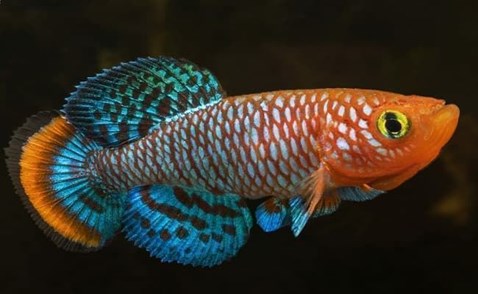
When we talk about a group of fish, as varied as the Killi fish are, we can find a great variety of sizes, appearance and color of the fish.
Killis are divided into at least 10 fish families, with 65 genera and some with more than 100 different species of fish.
Killi fish sizes can reach up to 7 centimeters, although there are much smaller Killi fish species and others that can exceed these dimensions.
There is also no uniformity in terms of body shapes, there are Killis with a cylindrical and elongated body, while others show a laterally flattened body.
There is a really curious variety, which has a lance-shaped tail fin, while in the vast majority the tail fin is more rounded.
A common morphological characteristic is that they have a protractile mouth, in which small teeth are arranged, which run through the jaw and pharynx.
What most Killi fish agree on and what has given them great popularity, without a doubt, is their color, they are very attractive fish, with vibrant colors.
We can distinguish that there is sexual dimorphism, quite evident between males and females.
It is easy to differentiate males from females, because they have a greater number of colors, or they are present more intensely than in females.
Another useful morphological aspect to distinguish both sexes is found in the caudal and anal fins, which are much more pointed in males.
Not to mention the size, the males differ because they are larger.
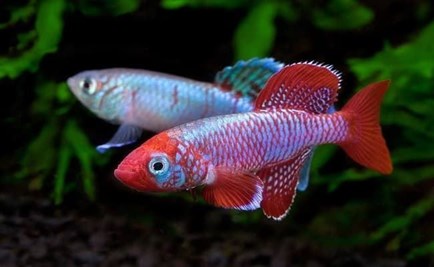
THE TYPES OF ANNUAL KILLIS:
These are the ones that are exposed to very intense dry seasons.
They grow in puddles and small watercourses that dry up when the time of drought arrives.
Vegetation usually fails to survive these conditions and dies.
The Killis have been able to reproduce and live in these environments and when the rainy season arrives, the water grows again.
At this point, the eggs that were entombed by the Killis break out of the substrate and interrupt their dormant state, known as Diapause, to hatch and repopulate their parent's space.
Because their life cycle is quite short, the larvae can reach their development quite quickly.
After about 45 days, the Killis in this group reach adulthood.
At this point they are ready to reproduce and will begin to create their own territories so that the females feel attracted and can spawn several times a day.
In the same way, the new adults bury their eggs in the substrate and the eggs that have managed to be fertilized will remain dormant until their ecosystem changes and provides them with good living conditions to hatch.
Something important about this group of Killis is that their life expectancy does not usually exceed one year, but when they are in the aquarium they live a little longer.
Factors such as water quality, intermediate temperatures and a diet that provides them with the nutrients they need help this species of Killis live longer in a home aquarium.
THE NON-ANNUAL KILLIS:
This type of Killis is quite different from the previous group.
The conditions of life and development are quite different between the two.
These species live in permanent water formations and do not suffer from drought.
Not everything is so easy for non-annual Killis, they are fish that must overcome problems with the quality of the water where they live.
This has caused them to become great jumpers and swimmers, until they reach water formations with better living conditions.
In some cases, in their natural habitat they tend to suffer, so they are forced to leave some aquatic formations to others.
This species survives because at night they are protected from heat and sunlight, so Killis must be kept well covered so they do not jump.
Some keepers may lose their fish for this reason.
If that happens, it is important to put the fish in the water immediately because they are capable of being out of the tank for about 2 hours.
This confirms the resistance of this type of fish.
Regarding reproduction, this group lays its eggs on plants, rocks, roots or any concave surface they find in the aquarium.
The development is quite fast because they can be born only a few days after spawning or hatch 2 or 3 weeks later.
The difference with the previous group is that they take much longer to reach the adult stage of their lives and it can take 5 or 6 months for them to reach sexual maturation.
Due to their slow growth, the living conditions in their natural habitat and the care that can be provided to this species in home aquariums, non-annual Killis have a longer life expectancy and can reach between 2 and 3 years.
In this group we can find the Aphyosemion: In Latin it means flag tail, Aphanius, Aplocheilus, Epiplatys, Rivulus agilae and Aph Platys duboisi.
THE SEMI-ANNUAL KILLIS.
This is an almost perfect match between the previous two groups. Among their living conditions, we find that they can live in small water formations like the annual Killis and in river currents like the non-annual ones.
The eggs can develop both if they are submerged in water and also by being buried in the substrate.
An important difference is that the incubation period is longer than that of the other Killis.
The youngest hatched after 21 or 30 days, but some can take up to 60 days. This causes its development to be longer than species such as the Aphyosemion.
In turn, the long development time makes it difficult to define sexual dysmorphism, making it difficult for the caretaker to tell the sex of the fry. After about three months, still in their youth, the sex of these Killis can be known.
In this group, the very popular Fundulopanchax stand out, which in their beginnings were known as the Fundulopanchax gardneri.
TO KNOW MORE ABOUT ITS CARE YOU HAVE TO KNOW ITS DISTRIBUTION AND HABITAT:
Killis are distributed almost all over the world, with a huge variety of habitats.
They are absent from Oceania, North Asia, and Northwest North America.
We have the Cyprinodon macularius that lives in the California desert and can withstand temperatures of up to 52ºC, while we have the Fundulus that lives in Canada and can withstand temperatures below zero.
Killis produce eggs capable of withstanding periods of drought of up to two years, even longer in some species.
This peculiarity can also explain the Killisfish phenomenon, since lovers of these fish can exchange eggs with a simple postal package.
They have adapted to live in a huge variety of different habitats and are found on almost every continent in the world except Australia and Antarctica.
They inhabit both still and moving waters, they are mostly freshwater fish; there are some species that are brackish and saltwater. In their natural environment, some Killifish, Annual Killers, have a lifespan that only lasts a few months.
One thing most Killies have in common is bright colors and vivid patterns.
Males are much brighter than females, and most of their heads are flat on top.
Killis fish can be divided into more than 1,250 different species, so it is difficult to generalize about aspects such as their character or care.
They are usually very peaceful and calm, making them good candidates for a community aquarium.
It is necessary to keep the males separated to avoid aggression.
They are generally easy to care for, although some species require more care than others.
It is necessary to know very well the needs of the fish that you take into your home because if they do not have the necessary care, they could die in just a few months.
Although body shape can vary, they all have the dorsal fin on the rear half of their body.
Males usually have both dorsal and anal fins much larger than females.
Some experienced keepers keep two male Killis in the same tank, but it is necessary to get to know them and create spaces and dimensions so that both can separate their territories.
Regarding fish of another species, always try to keep them separated if you do not have experience taking care of home aquariums.
The females can stay together with partners of their species or others, but the males do not usually tolerate company well.
A very common feature of their behavior is their great ability to jump.
These are fish that can live in very small water formations and have developed good muscles to jump to deeper and safer waters.
In this sense, it is very important to keep the aquarium covered to avoid unexpected jumps that endanger them.
You should also keep in mind that these fish are very small, so they can jump through any small space, so keep the aquarium with a secure lid.
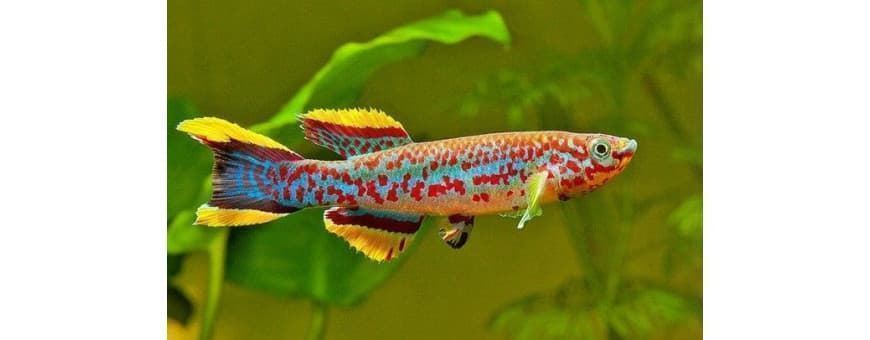
Killis fish, also known as "toothed carp", are part of the Cyprinodontidae family and there are a wide variety of different species spread throughout the world.
The waters of Oceania, North Asia and Northwest North America are the only regions where fish of this species can rarely be found.
Its origin takes place in tropical waters, but over time they adapted to new temperatures and river currents.
They can live well in cold or intermediate climates, just as they are able to survive in unstable environments or with periods of great drought.
Ponds, streams or reservoirs are places that suffer from very extreme climatic changes depending on the dry or rainy season, but Killis fish can withstand these living conditions.
In the wild, Killis live in still or moving water and often prefer fresh water. Although some species have greater resistance in brackish or even salty waters.
These fish have an anatomy that simulates a cylinder and can measure between 3 and 7 cm.
Due to the wide variety of varieties that exist of these fish, some species can grow larger.
His mouth is small and his teeth are medium.
A small plateau can be seen on top of the head.
Their teeth are quite efficient at getting food because they are long, curved, and have a very sharp point.
Their scales are rounded in most species and they do not usually have a barbel.
Due to their elongated body, they are very agile and fast swimmers.
The fins can vary greatly depending on the type of species.
Some have short, round fins, while others have wide, long fins.
The difference between males and females is quite evident and differences in skin tone and size can be observed.
The males are larger and their skin has more varied and intense colors.
In contrast, the females have duller colors and grow less.
There are some exceptions regarding the socialization of Killis, but in general, several females usually coexist with a dominant male. Normally, this male does not allow another of the same sex because it could threaten his supremacy.

THE BEST CONDITIONS OF THE AQUARIUM:
The great variety of existing Killis fish would make it necessary to adapt the aquarium to its correct habitat.
We can venture some general characteristics, which could be used for a wide variety of species, the most commercial.
As we are talking about small fish, we do not need an excessively large aquarium, with 50 liters it would be enough.
It is a great idea to include enough plants in the aquarium, to generate natural shelters, and that the fish can hide.
The water temperature should be between 18ºC and 26ºC, with a pH between 5.5 and 7.
Killis like the aquarium water to be refreshed frequently. We must remove at least 50% of the water from the aquarium, once a week.
A 20-gallon aquarium is perfect for a pair of regular Killifish; if you opt for one of the larger species adjust your tank size accordingly.
Most Killies should be kept in a long, shallow tank with little to no water movement.
Your aquarium should have plenty of live plants, mainly floating plants.
Plants that are suitable include cryptocynes.
This is because they do well in low light levels.
The tank may be bare on the ground, but most people like to cover it with dark gravel.
If you decide to use gravel, you should choose a type that will not harden the water.
Do not use gravel if you intend to get bottom spawners, you can use peat instead: as long as it does not contain fertilizers or additives.
You should also provide some hiding places for your Killies; this can be on the roots of floating plants, rocks or wood.
The pH balance is different in every Killifish tank because every Killie has a different preference. For example, some come from soft acidic waters and others live in hard alkaline waters.
For most Killies a water hardness of 120-160ppm is appropriate, water hardness is not as critical to achieving pH balance, although there are a few species that require soft water: better for breeding or hard for example, the Nothobranchius.
As for filtration, if you choose to have a small aquarium, you will most likely need to use a filter unless you are prepared to do frequent small water changes.
Small tanks are much easier to contaminate than large ones, as waste products build up quickly.
A filter will break down toxins, and the most common type to use in a small tank is a simple box filter with a sponge or filter wool. If you have a large aquarium, you may choose to use filters under the gravel.
Killifish are mostly carnivorous, and in their natural environment, they eat crustaceans, insect larvae, and worms.
Some are omnivorous and include algae in their diet.
In an aquarium, most Killifish require live food, so if you are unable to provide them with live food, or hope that you can switch to flake food, they are not the right fish for you.
A varied and well balanced diet is particularly important if you are keeping Killifish.
Killis do not present problems with the community aquarium type.
They accept the normal current of an external or basket filter. If the water has too much current, they will look for the most protected areas of the aquarium, usually not far from the hole with peat that serves as their nest.
So that the movement of water does not extract the peat from the hole or the bowl, it is preferable that we only fill a third of the available volume, allowing it to be removed by the fish and fall back inside it, not being scattered around the aquarium.
The Killis will combine the shaded areas with the lower parts of those large leaves.
All community aquariums with Killis must have a lid without a hole because although they do not tend to jump, it may be that if they get scared they will be thrown out of any hole in their eagerness to flee.
At Glu Glu Pet we recommend the following products:
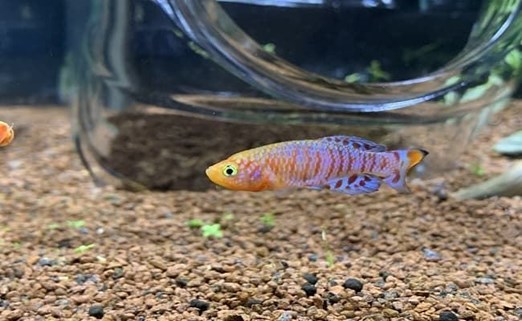
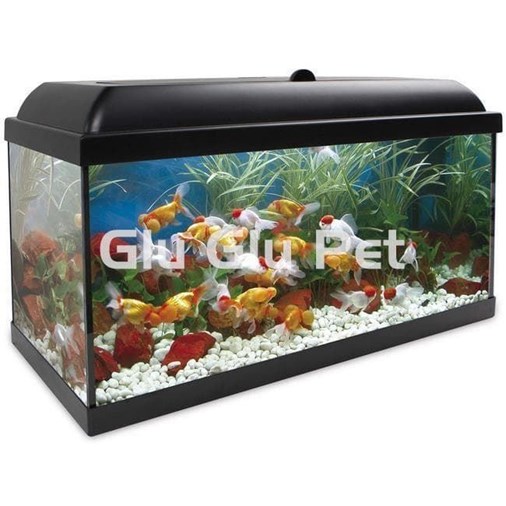
THE AQUARIUM PARAMETERS OF A KILLI FISH:
When it comes to these fish, the keeper has to keep in mind that Killis gather a wide variety of distinguished species and their care varies from one to another.
We can classify their care into two large groups, those that grow in tropical forests where they develop in streams or swamps and those that grow in thick forests.
These wildlife conditions make them flee from excessive light and require temperatures between 20°C and 23°C.
The pH level can also vary depending on the origin of the Killi species you bring home, but their average range is 6.6 to 7.2 when they are in domestic living conditions.
In the past, an Irish moss peat was used which was filled with Killi fish substrate.
Although this is a technique that is still used, it is necessary to take the necessary precautions because the peat could make the water too acidic.
It is best to use products specially indicated for this purpose and that can keep the pH level of the aquarium stable.
Again, the capacity of the tank will depend on the size of the Killis, but a 30 liter tank is fine for a couple of Killis.
Larger species should have more space.
The reproduction of the fish must also be taken into account because the fry will also need space.
The capacity of the aquarium is directly related to the quality of the water for the fish.
The water mixes with the substrate, toxins and waste from the fish, so if there is not a good filter or enough space for the fish, the toxic agents will multiply to dangerous levels for the fish.
When the water conditions are contaminated by chemicals such as ammonia, which accumulates at the bottom of the aquarium, it can cause diseases or infections that can be fatal for all the inhabitants of the aquarium.
Because Killifish are fast swimmers, they need a long, shallow tank.
You can avoid gravel and sand, but most home keepers prefer to provide their fish with dark gravel or peat moss for comfort.
In the event that the Killis reproduce at the bottom of the aquarium, the gravel could harm the eggs and some may not hatch due to these conditions.
Peat is more comfortable for this type of fish, but it is important that it does not have fertilizers.
At Glu Glu Pet we recommend:
- Analysis test.
- inert substrates.
- Fertilizer substrates.
- Bouquet or pot plants.
- rocks.
- logs.
- Ornaments.
- Aerators and accessories.
- Conditioners.
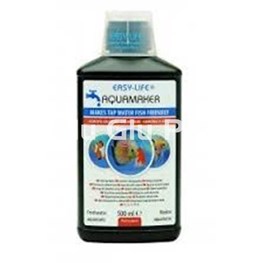
THE BEST AQUARIUM LIGHTING:
The light that the aquarium will receive will depend on the species of Killis that will inhabit it. However, most do not tolerate very strong or prolonged light exposure well, so it is best to give them a low-light aquarium.
Tank lighting, once again, depends on the species; most are used to shade from direct sunlight and therefore prefer low light tanks.
The lighting will be the normal one that we have for our plants. If the lighting is very intense due to the light needs of some species, we must generate shaded areas that will be preferred by the small Cyprinodontids.
At Glu Glu Pet we recommend:
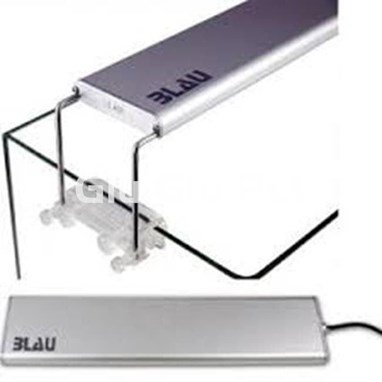
THE IMPORTANCE OF TEMPERATURE CONTROL:
All fish, due to the conditions of their natural habitat, have a range of temperatures in which they can live.
When these levels change to temperatures that are too high or low, they can die.
Fish, unlike many other beings, are not able to maintain their internal temperature.
All the internal metabolic processes of their organism need a specific temperature level according to each species, so they tend to move towards colder or warmer waters as needed.
These species are called poikilotherms because of their cold blood.
Although fish can generate a small degree of heat, this dissipates rapidly in aquatic environments.
Some fish do have the ability to regulate their temperature, but this is not the case with Killis, which is why they need specific care in the aquarium.
The effects of reaching the critical temperature can vary depending on whether it is a low or high temperature critical point.
In the minimum temperature range, fish experience a significant reduction in their vital functions.
This is because their movement is greatly reduced by the temperature of the water.
When the temperature is very high, a reduction in their vital functions is also observed, but there is increased ventilation and movement due to the lack of oxygen.
When the temperature limit of each species is exceeded, the negative effects on behavior are immediate.
Swimming becomes erratic and messy, and when the temperature is very high, there is less oxygen in the water and the fish begin to gasp.
When the temperature is very low, they go to a stage of little or no movement, which is called "anesthesia stage", where if they persist, the fish can die.
When the critical temperature situation is corrected, the fish have a good life expectancy and return to their usual behavior very soon. However, when the temperature is high, the situation is more dangerous.
Asphyxiation and oxygen deficiency can cause severe internal damage such as damage to the gills.
It is important to keep fish and plants in an aquarium with temperature requirements that they can share, because disabilities can cause health problems.
It is important to find out about the type of temperature that fish need and to have the aquarium prepared for them.
Changes and conditions in transportation can cause fish to suffer from stress and immune weakness.
If necessary, provide a separate tank for the new fish and give them time to rest before adjusting to the other fish in the tank.
THE AQUARIUM HEATER AND THERMOSTAT:
Aquarium heaters are designed to regulate the water without sudden changes in temperature.
This is an essential part of caring for your fish because their health can be affected to the point of death if they don't have the temperature they need.
It is necessary to choose one that suits the particular needs of the fish and the aquarium in general.
There are many heaters for aquariums, but they are always designed according to the number of liters of water that the aquarium can hold.
Therefore, it is necessary to choose one in which its nominal power is sufficient to heat all the water.
A general rule of thumb for choosing a heater is one that has 1 Watt per liter of water.
Killis usually need a space of about 30 liters to have a healthy life, so a heater of about 50 watts is fine for them.
It is also necessary to choose a model with smooth operation that does not expel temperature shocks that can cause episodes of shock in the fish.
Thermostats are also important to know precisely what temperature fish are at.
Many heaters have a built in thermostat to avoid buying an extra one.
It is recommended to have an additional thermometer to verify the exact temperature of the aquarium water.
It is important that the heater works automatically because manually adjusting the temperature is not possible for the vast majority of caregivers.
Newer models feature an auto on/off feature to control temperature and save energy.
Because it is an electrical piece with a very defined purpose, it is important that it is completely submerged in the central part of the aquarium.
Many keepers forget that heaters, as a general rule, have a greater effect on areas close to the heater, which can cause varied temperatures in the aquarium.
The heaters usually have cavities, so it is necessary to keep them completely submerged because some fish, especially small ones such as Killis, can get trapped and die from not being able to return to the water.
Remember that Killis are good jumpers so the aquarium must be completely covered and with the heater in the water.
The heaters always remain hot when in operation.
When changing the water in the aquarium and washing it, it is necessary to turn off the heater and wait for it to cool down in order to remove it and avoid burns.
Whenever you remove the heater from the water, it must be turned off to avoid damage to the equipment.
At Glu Glu Pet we recommend:
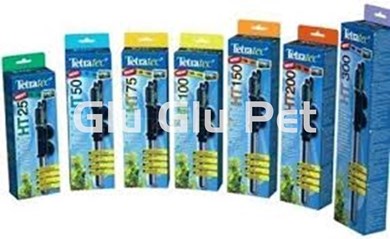
QUARANTINE AQUARIUMS:
The quarantine aquarium is a fundamental element for the health of the fish and not everyone gives it the importance it deserves.
This aquarium helps prevent disease and health problems for all aquarium inhabitants.
Introducing new additions always presents difficulties that may be hidden.
Fish, invertebrates, plants or even rocks can be the source of epidemics within the main aquarium.
In the worst cases, some new addition may be incubating some disease that does not yet show visible symptoms.
There are some specific species, such as Corydoras, that are capable of transmitting fish diseases without them suffering from the symptoms.
Due to all these risk factors, it is necessary to maintain an auxiliary aquarium where all new fish, plants or rocks can be quarantined for a period of time to avoid risks to other fish.
It is also important to have a quarantine aquarium to carry out medical treatments individually.
In a community aquarium, all the inhabitants are nourished by the same chain of water and the same foods.
It is advisable to have an auxiliary aquarium in case of antibiotic treatments and prevent healthy fish from taking these doses.
Maintaining the exact doses of medication in a large aquarium is more difficult and expensive, while in a quarantine aquarium with only one member it is easier to control.
When the new additions are kept in isolation, they allow a more detailed observation of their health status.
Many diseases have noticeable symptoms on the skin, eyes, or fins of the fish, so this time alone is essential for a correct diagnosis.
A more detailed feeding for these species is also necessary.
Remember that this new fish will live with others that are used to a specific diet, so this period of adaptation alone is very important to avoid conflicts and territorial fights for food.
Most of the diseases suffered by aquarium fish are caused by a significant drop in their defense system.
Stress, tank mates, or a change in development can make fish irritable and aggressive, so it's best to keep them in a tank where they can't attack their mates.
Normally, when the fish must adapt to a new aquarium, their diet must change to improve their defense system.
Their immune system may be weakened by the change and they need a specific diet to be ready for the continued aquarium.
Quarantine aquariums are very varied, depending on the types of specimens that are intended to be kept.
This waiting time is unnecessary when it comes to an aquarium in which medical treatments will be applied.
What must be taken into account is a previous margin of time before the arrival of new fish, plants or rocks.
The best way to acclimate the fish is to fill the quarantine tank with water from the community tank so that the new fish get to know their new habitat.
In addition, this is a good opportunity to change a percentage of the water in the main aquarium, which helps eliminate waste and toxic materials.
The water conditions must be the same as the community aquarium.
Fish are very sensitive to changes in water, so a heater and thermometer should be installed to monitor these parameters.
A filter should also be installed to keep the water clean and some current.
Optionally, water diffusers can be installed when it comes to freshwater aquariums.
The lighting should be the same as the main aquarium so that the new companions get used to the photoperiod.
During the first days the light can be kept off or dim and as the days go by adjust it to the parameters of the main aquarium.
When the fish are being incorporated into a new environment, it is necessary to provide them with dark vinyl in the back and the planted areas of the aquarium so that they do not suffer from stress.
Quarantine tanks are much smaller than a main tank, so their parameters are more unstable and difficult to control.
To avoid proliferation of toxic agents, it is necessary to make small constant water changes to avoid fluctuations of dangerous toxins.
When it comes to drug administration, other fish can be affected.
In addition, the dosage in a quarantine aquarium is much more exact.
Fish are more competitive than we think, so it is necessary to teach new specimens to adapt to their new diet because with the presence of veteran fish that want to fight for their hierarchies, they can suffer from stress or lose their appetite.
Although Killis do not usually eat their young, some species can do so.
This is a natural process of reproductive control, but if you want strong, healthy fry, you can use a quarantine tank until the juveniles are able to fend off other tank inhabitants.
AQUARIUM PLANTS FOR KILLIS:
Maintaining the ecosystem of an aquarium is not an easy task.
Bacteria breed easily in water and can reach dangerous levels.
To help maintain the best possible living conditions for Killis, plants help a lot.
The plants help maintain the health of the aquarium because they keep the nitrate levels that are produced by the amount of excrement in the aquarium under control.
Plants also work as a source of extra and natural oxygenation.
Maintaining healthy oxygen levels is essential to avoid diseases and complications of the respiratory system of fish.
In the event that you accompany your Killis with herbivorous fish, plants are the alternative food source.
Fish are very sensitive animals and susceptible to stress.
When fish are exposed to situations that raise stress levels, it affects their metabolism and overall quality of life.
The plants provide barriers that prevent excessive lighting and resting spaces for the fish.
Plants are critical in maintaining and helping to control nitrogen levels.
The remains of ammonium, nitrites and nitrates feed and grow by making use of nitrogen.
Nitrogen is part of the fish ecosystem, but it must be controlled with the oxygen cycle.
Bacteria and fungi that produce oxygen are capable of breaking down organic nitrogen, so it is important to maintain a balance between these two compounds.
Plants are a very important source of natural oxygen to clean the water of dangerous toxins.
The bacteria that help remove nitrogen are not found naturally in water, so they must be transported via oxygen.
It is recommended that fish not be kept in a freshwater aquarium that has not been in operation for at least a month.
This is the estimated time for oxygen bacteria and fungi to enter the water and be able to avoid excess toxins. This is the process known as water cycling.
A good way to speed up this process and bring Killis to the aquarium is to make use of fast growing aquarium plants.
These can introduce a good amount of oxygen into the aquarium in a shorter period of time.
This helps keep most of the nitrogenous agents found in the water in check.
We will talk about some plants that you can include to improve the water conditions for the Killis that are about to arrive at the aquarium or those that are already in it.
Types of plants such as:
- Foxtail: The scientific name of this plant is Ceratophyllum Demersum and it is a variety that grows quite fast and does not have excessively complex requirements. It is not necessary to feed it with a CO2 supplement and it does not need too much lighting.
- Ambulia: Science has named this plant Limnophila Sessiliflora, and although it needs more light than foxtail, it is also very easy to care for and maintain. It is also a very showy variety and its leaves cover a Killi tank well.
- Egeria Densa or Elodeas: These are plants that are not very demanding in their care and can live in an aquarium with little or a lot of light.
- Sumatran fern: They do not require extra fertilizers, they are plants that should not be too exposed to light because they can dry out, which makes them compatible with Killis.
- Anubias nana: In their natural habitat, these plants share the same waters as the Killis, so they are a good option to recreate the natural environment in which these fish live.
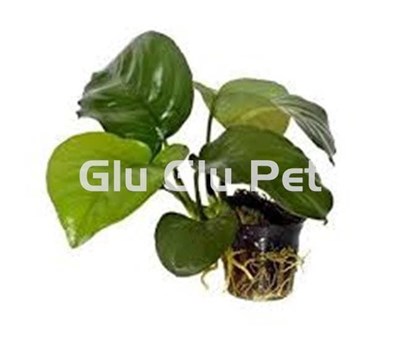
- Java Moss: This is the best choice for Killi species that are fast swimmers. Its leaves are very useful for spawning and to protect the females and the youngest Killis.
- Ceratopteris: Some Killi species are particularly sensitive to light exposure, so these leaves can filter light very well and provide dim or dark seasons.
- Myriophyllum: These help create a warm environment and cover for fish that are recently added to the aquarium. Create barriers and spaces so they can hide or take refuge while they get to know the aquarium.
Floating plants are a good option to provide shelter for Killis.
These fish need a subdued environment.
4.7.- AQUARIUM FILTERS FOR KILLIS:
Filters are very important for home aquariums.
They are the ones in charge of recirculating the water and eliminating toxic agents that accumulate over time and the biological activity of the aquarium inhabitants.
They can also retain particles of solid materials such as plant bits or detritus.
A good filter is very important in any home aquarium.
Because in natural ecosystems water flows and stays clean, it is necessary to recreate these conditions at home.
The filter you choose should have at least 5 times the total water capacity of the aquarium.
It is also necessary that this urn not be too large or cause excessive movement.
Although Killis are good swimmers, almost all species are smaller in size, so they can suffer from hyperactivity and stress if they are in environments with too much movement.
The filters have quite homogeneous functionalities in all the models.
They are responsible for capturing waste and keeping the water clean.
The capacity, power and distribution of its parts can make some more efficient than others. Killis need filters that don't disturb the movement of the water too much and that don't cause a lot of noise.
For Killis, the best filter option is a sponge filter.
These are basic, but efficient because they have a sponge inside that is responsible for mechanically filtering and also has the ability to clean biological debris.
Filtration of a home aquarium can be done in different ways; mechanical, biological and chemical. This is closely linked with the type of filter material that the filter has.
Mechanical filtration: this is the way in which the coarse particles found in the aquarium are trapped in a mechanism made up of foamex sponges. The pores are of different sizes to capture even the smallest materials. They are also made of perlon wool which is much thicker and more resistant.
Biological filtration: this is the most important type of filtration because it will be the one in charge of eliminating toxic substances. As a product of excess biological activity, these substances remain in the water. At low levels they are not harmful to fish or plants, but when they start to increase, they can be deadly. This mechanism works using very porous materials such as clay, which are known to be natural substances capable of converting toxic agents into less dangerous substances that do not alter the balance of the aquarium. In order not to alter the chemical levels of the water, neutral materials are usually used that do not alter the values of the water. Biological materials are traded from synthetic quartz and other materials.
Chemical filtration: this is an uncommon type of filtration in home aquariums, but it is worth knowing, especially if you have Killis at home. It is usually used to clean the water of very specific chemical elements such as medicines. This type of filter material is also often used to level the pH levels or hardness of the water. Among the most common chemical filter materials on the market are specific activated carbon for asir filters, acidifying peat or absorbent resins.
At Glu Glu Pet we recommend the following:
5.- NUTRITION:
Although there are many species of Killi fish, they are all usually small in size and can eat commercial food as adults without any problem.
When they are fry, their small body is only capable of digesting live food such as protozoa and microworms.
The eggs of Artemias Salina are also a very common type of food in the first stage of life of Killis.
Non-annual species can eat commercial foods if they are crushed into small pieces so that they can reach them with their jaws after one year of life.
The annual species grow a little more and after a month of being born they have a good enough physical development to eat commercial foods.
Food requirements are also specific to each species.
Nothobranchius are good for a diet that contains traditional flakes, while Austrolebias are difficult to eat or are inert.
Lately, the production of homemade porridge as food for fry has become very popular.
Due to the density of these foods and their nutritional content, they can be a good way to feed them, but the contamination of the water is much greater than with any other type of commercial food.
At Glu Glu Pet we recommend the following products:
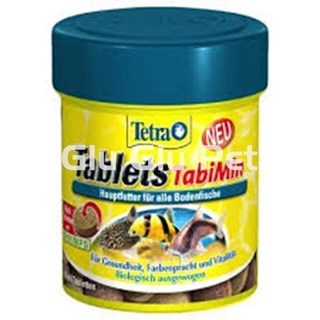
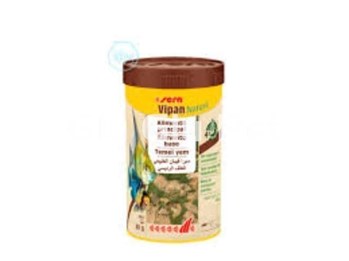
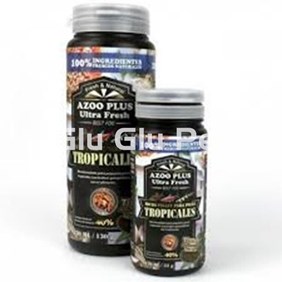
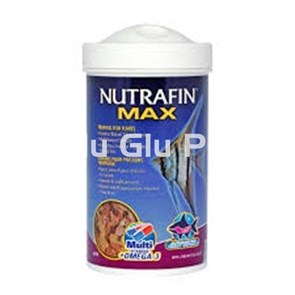
5.1.- DIET WITH LIVE FOODS:
Killis are a carnivorous species that need protein to maintain good health.
Its development is linked to the quality of its diet, so it is necessary to include live foods in its menu.
In the adult stage they need this type of nutrient to reproduce, and although these are a bit more expensive, in their natural habitat these are usually their daily food.
5.2.- INFUSORIA:
Killis are small fish that prey on unicellular organs like protozoa.
A good thing about this type of food is that you can grow it at home using and some decaying plant material such as wood or an animal.
The smaller species of Killis such as Nothobranchius and Epiplatys feed on these microorganisms.
The paramecium is one of the most nutritious infusoria and appreciated for its high amount of vitamins and antioxidants.
5.3.- VINEGAR EEL:
This is a very popular food for Killifish because of its size and easy care.
These eels are only a few millimeters long and can be kept in a mixture of 70% vinegar and 30% water.
They live very well in this water chain and do not need substrate.
Many domestic keepers are dedicated to growing this food at home for its ease of care.
They do not require a lot of space or a specific diet.
This is an ideal food to give Killi fry during their first month of life.
5.4.- ARTEMIA NAUPLIUS:
This is one of the most important live foods for a Killifish, especially if it is in its juvenile stage.
It is a great source of protein, minerals and vitamins. But its nutritional components are not the only ones, since it has a large amount of digestive enzymes that help the development of Killis.
This is food that has a larger size and is in third place in the food scale of a Killi, but some larger species can eat artemia nauplii after infusoria.
Austrolebias and fundulopanchax are large Killi species that can tolerate this food well after 1 month of being born.
5.5.- MICROWORMS:
Worms are a very common type of food in all home aquarium fish.
They are a great source of protein and lipids, but small species like Killifish need microworms.
These are less than a millimeter long and can be grown at home.
They can be included in the diet as an alternative to Artemia Nauplii during the weeks of a killifish's life.
5.6.- ENQUITERAS AND GRINDAL:
These are a slightly larger species of worms that can be up to 2 centimeters long.
They are very nutritious, but due to their size they should only be given to young and adult Killis.
They are also very easy to care for at home and do not require a lot of space to live.
The enquitreas reproduce in a temperature of 19 ° C and the Grindal in one of 20 ° C.
It is important to keep in mind that their fat content is high, so they should only be given once a week to avoid diseases such as fatty liver.
5.7.- DAPHNIAS:
This is a freshwater crustacean that is part of the natural food sources of Killis in the wild.
Its cultivation at home can be a bit complex because it needs a lot of space to grow, although its maintenance is not complicated.
It serves as food for young and adult Killis.
A couple of adult Daphnias can be incorporated into the aquarium two weeks before the fry hatch, so that the Daphnia nauplii serve as food for the fish at this early stage.
5.8.- CALIFORNIAN WORM:
This worm is one of the most common live foods for adult fish.
They are also very beneficial for the different inhabitants of the user because the larvae are usually similar in size to an adult grindal, which makes this a food that can be used for adults and fry.
6.- BEHAVIOR AND COMPATIBILITY:
Most Killi species are annuals, meaning they only live for one year.
When they are fry and very small, they are sociable and have no problem sharing space with other specimens.
As their biological clock ticks, some species become more aggressive, trying to ensure their survival and that of the species.
When the spawning season arrives, the males will try to protect their territory from other congeners, they become more aggressive.
This section will provide an overview of Killifish tank conditions. It is important to read this advice in conjunction with the species-specific advice.
In the wild killies inhabit a wide range of locations, most killer fish are also quite hardy and therefore replicating their natural environments in a tank is not too difficult.
The tank size and configuration will depend on how many fish you want to keep and what your reasons are for keeping them. Whether you keep your Killies in saltwater or a freshwater tank will also depend on the species.
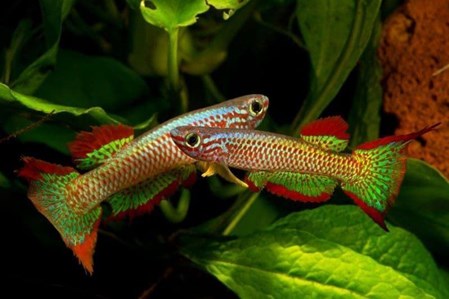
7.- PLAYBACK:
In the reproduction of the Killis it is necessary to distinguish between the annual species, which bury their eggs in the substrate, and the non-annual species, which lay their eggs stuck to the plants.
The spawning of the annual species takes place in an aquarium of 15 to 20 liters, where several pairs of the same species are introduced.
The bottom is lined with boiled peat, which will serve as a nest for the pairs.
The females usually lay a few eggs each day.
The substrate is removed every two weeks and placed in bags, which will be kept at a temperature between 15ºC and 25ºC, until we place them in their definitive aquarium.
Once a month it is checked how they are developing and how long they need to hatch.
You can tell that it's almost there, when you can distinguish the black eyes of the fry.
The fry that have consumed their yolk reserve are fed with nauplius of Artemia.
Killies are actually very easy to breed, and this is perhaps the main reason why they are so popular with aquarists and have such a huge fan base.
There are two different types of playback:
- Annual Killifish: In their natural environment, the annual killifish lives in a non-permanent body of water that dries up each year killing the fish. These fish have adapted to grow and reach sexual maturity extremely quickly, usually in a few weeks. They lay their eggs in the peat moss and hatch when the water returns. In the aquarium environment, they will need a small breeding tank with sand or a peat substrate where they can bury their eggs. Once the eggs have been laid, the water and parents should be removed and the substrate kept warm and moist for about 3 months. After this time, the water can be added again and the fry should hatch. Annual killies have a life expectancy of up to 2 years in an aquarium.
- Non-Annual Killifish: Killifish's natural habitat does not dry out. The eggs incubate in water, for a much shorter period of time. They will need a much larger tank. Some breeders like to include some fine-leaved plants, however it can be difficult to remove the eggs from the plants. If you choose to include plants, you'll want to remove the parents soon after they have laid their eggs to prevent them from being eaten. Non-annual Killies are long-lived and grow much more slowly than annual Killies.
Any small aquarium will do as long as we keep the lid perfectly closed.
Thermo-heater at 24ºC and a small mechanical sponge filter.
Screen with low intensity light. No sand or substrate on the bottom.
It is convenient to place, for example, an Anubia, a Java Fern or a piece of Java moss.
They will help to oxygenate the aquarium and provide shelter for the fish.
It is a good idea to place an air diffuser with a low output in the spawning area, which will be on the leaves of the placed plant.
Eggs take two to three weeks to hatch.
Killis are quite resistant and it is very likely that we will get their reproduction
It can be fed with powdered food for fingerlings: Artemia eggs and infusoria.
Annual Killi clutches take considerably longer.
To maintain the breeding tank it is convenient to siphon a quarter of it weekly.
About two months the hatchlings have already developed enough and depending on our fish in the community aquarium we can begin to introduce them to the main aquarium.
The reproduction of Killis does not present major drawbacks, but some species require different methods and practices.
Providing enough space, food, and good water conditions for many fish can be really tricky.
It is recommended to have an aquarium with the conditions that a few fry need, rather than trying to have many fry in the urn.
Fingerling overpopulation can result in decreased life expectancy due to disease and poor water conditions to which they may be exposed.
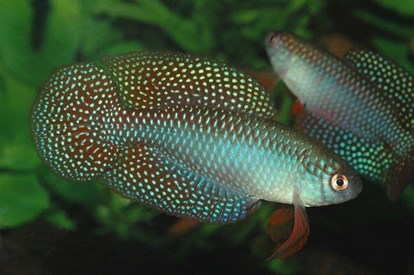
7.1.- BREEDING OF FRY:
Keeping the eggs in a different aquarium helps maintain more control over the living conditions they have when they hatch.
They also learn to navigate the difficulties of their environment in a safe environment and their skills are strengthened.
They tend to have a stronger immune system and a more efficient swim.
Another advantage of this method is that they grow very quickly and reproduce again.
The species of Killis Scriptaphyosemions tend to be very hardy and do not usually devour their young.
This is a good option to keep reproduction in control in home aquariums.
7.2.- CONDITIONS OF THE AQUARIUM FOR FRY:
Plants are a great tool to give the fry shelter while they grow.
The leaves give a lot of cover throughout the aquarium and help the fry in their growth.
Indian Fern, Java Moss and Riccia are also a good option to keep the substrate clean.
The substrate should be shallow with gravel that works as a refuge for the fry.
Other spawning sites can be included to improve the conditions for their development.
When the fry are in a community tank, they need space to shelter from larger fish that may injure or eat them.
At this point you can choose to bring the pair into an individual urn for the fry to develop or leave them in a community tank with their parents and older siblings.
Some species may be more sensitive to eating their young, while others may not.
The predatory action of this species is also important because it helps control overpopulation in the aquarium.
Feeding larger fry can play a role in the level of predation that exists in the aquarium.
Spawning plants are important for species such as Fundulopanchax nigerianus. Usually, Killifish eggs hatch in safe, predator-free locations near the surface.
This is the best option for species that do not lay too many eggs, as it allows the keeper to keep an eye on the growth and evolution of the embryos by incubating a group of fry in the same place.
This also helps reduce cannibalism and fighting for food.
It is important to note that depending on the species, Killis can spawn in different places in the aquarium. Plants are usually the ideal place, but some need to do it on the ground and need the gravel or sand to be clean.
It is also necessary to keep the lighting in the aquarium low because some eggs are sensitive to light and could have problems developing if they are exposed to too much light.
8.- CARE OF KILLIS FISH:
Although for all the above it may seem that it is a complicated species to care for, it is quite the opposite.
Being such a resistant species, they have learned to adapt to everything.
For this, you do not need to have a large aquarium, a 50-liter one is enough, but yes, you must have it well covered since killifish love to jump and you can have an upset.
They like to feed a couple of times a day based on live prey, larvae, insects, mosquitoes, but even if it is not their favorite, you should also give them some porridge with vegetables so that they have a varied diet.
If you are a fan of the world of fish and you like to have the most curious fish in your aquarium, this is the one for you, as well as being very beautiful, with a very vivid and showy coloration, especially in males.
The killifish is a really curious species that has a large number of followers and fans who are dedicated to caring for them and their young.
Despite the fact that at first glance it may seem like an exclusive environment and therefore it can be deduced that these fish are complicated to breed and care for, this is really not the case.
Killifish are a much more hardy species than it seems, adapting to almost all types of habitats.
To take care of a fish of this species, it will be enough to have a well-covered fifty-liter aquarium, because otherwise the fish could jump and fall out of the water.
Killifish are really independent fish so you shouldn't mix them with other aquatic species because they tend to be violent.
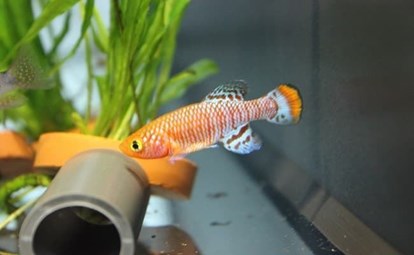
9.- HEALTH OF KILLIS FISH:
Killis are prone to the vast majority of diseases that home aquarium fish are exposed to.
A great advantage of Killis is that their evolutionary resistance has generated a robust and developed immune system.
Next we are going to talk about the most common diseases in Killis and their symptoms.
9.1.- OODINIUM:
This is a disease caused by protozoa and occurs in a form similar to "ichthyo".
The extent of this disease is not that great and the appearance of affected fish is different.
The skin of the fish has a small layer of a kind of velvet in reddish or yellow colors when the cause is the parasite Pisciodinium limneticum.
While the color can be gray or white when it comes to the parasite Piscinoodinium pillulare.
One problem in diagnosing this disease is that this skin coloration is not obvious until the disease is in an advanced stage, so attention must be paid to the fish's appearance and behavior.
The diagnosis can also be confused with that of Fungosis because in this the skin also presents a certain darkening when the attack of the Saprolegnia parasite is just beginning. This parasite lives in the honey, the fins and sometimes in the gills.
Like Ichthyophthirius: Punto Blanco, this protozoan has in its cycle a phase of parasitism during which it is located in the skin, fins and occasionally in the gills of the fish followed by a later stage of encystment during which a series of of divisions.
Like all parasites, this one feeds on live organic morning globules, and can even damage fish tissues or enzymes.
9.2.- RAMPANTE OR SWIM BLADDER:
One of the most common causes of death in newly hatched fingerlings of annual species from South America is creeping.
It was thought that it was due to a classic pathology of this species, but the development in the filling of the swim bladder is the real cause of this problem for the fry.
This is a disease that is associated with the amount of substrate to which the eggs have access during their incubation process.
Due to this problem, the fish are not able to stabilize their swim as they should, so they begin to produce high amounts of carbon dioxide due to the muscle wasting they must do to be able to swim.
As a defense mechanism, fish store this amount of carbon dioxide in their blood to fill the swim bladder.
If the respiratory system becomes complicated because they need more oxygen for their daily anaerobic activity, their gills begin to fail.
Nitrate contamination, oxygen deficiency and poor quality of the substrate are conditions that are also associated with the origin of the swim bladder.
9.3.- FUNGI OR SAPROLEGNIASIS:
Also known as fungal disease or mycosis, this condition is caused by the fungus saprolegnia and achlya.
This disease usually occurs in fish that already have other health problems such as wounds on their skin.
It is also associated with aquarium hygiene that overloads the immune system of fish, making them more prone to fungi present in the water.
These fungi are not usually too pathogenic, but due to the change in pH in the fish tank, this becomes a perfect living condition for fungi.
The eyes, skin, fins and gills can be affected by this disease.
You can see a certain white layer, similar to a cotton cloth on the skin of the fish, they usually lose their appetite, their swimming becomes slow and they usually stay in the darkest areas of the aquarium.
9.4.- DROPSY:
The origin of dropsy in aquarium fish is still unclear, but bacteria such as aeromonas and pseudomonas contribute to the occurrence of this disease.
The immune system is greatly weakened by these microorganisms present in the water and the fish may suffer from dropsy.
If the diagnosis is made early in the disease, the prognosis is favorable, while if the disease is advanced, the fish is less likely to recover.
Among the most common symptoms of dropsy is the inflammation in the belly of the Killis caused by fluid retention and the poor condition of the internal organs.
Tiredness, lack of control over muscle movements, puffy eyes, fungal infections, and loss of appetite may also be seen.
9.5.- FINS ROT:
This is one of the most common diseases of aquarium fish, and Killis are prone to it.
It is a disease caused by bacteria.
This disease is usually a consequence of other diseases when the world system of the fish is already weak.
The main cause of these diseases is the lack of care and the poor conditions of the water in which the Killis live.
This is usually one of the health complications that takes more life in aquarium fish. When the disease is advanced it becomes lethal.
The main symptom of fin rot is the appearance of certain parts of the body.
The fins have a white or reddish color accompanied by a rough and corroded texture, as if they were crumbling fins. Holes in the fins can also be seen and the fish become very inactive.
9.6.- DACTYLOGYROSIS:
Fungi from the Branchiomyces sanguinis group are usually the cause of this disease.
It is also known as gill rot and is a very serious disease for Killifish.
Unlike parasites, fungi feed on non-living organic material and do not belong to the plant or animal kingdoms.
Fungi are organisms that belong to the group of Fungi, and in animals they can feed on dead skin or can lodge in the wounds of fish.
This is a contagious disease that spreads quickly throughout the aquarium because it releases a kind of white material, similar to a spider web that spreads in just 48 hours to the rest of the fish in the aquarium.
Because these fungi attack the gills, the fish have a lot of trouble breathing.
The fish use the gills to absorb oxygen and expel CO2, but due to this disease, they cannot release it and their internal organs enter a process of necrotization due to lack of oxygen and excess CO2.
Poor water conditions, accumulated organic materials, very low pH and external contamination can be the main causes of dactylogyrosis.
If the gills are carefully observed, it can be observed that they are wounded or injured. Fish often seek the surface for oxygen and have labored breathing and swimming.
9.7.- EXOPHTHALMIA:
The diagnosis of this disease can present problems because its main symptom can be confused with those of other diseases such as Tuberculosis or Infectious Ascites.
Exophthalmia occurs when there is an excessive accumulation of biological fluid inside the eye or in the ocular cavity.
The eye presents inflammation, swelling due to excess fluids produced by the body as a defense mechanism against foreign agents such as parasites, microbial agents or chemical changes in the water.
In the vast majority of animals, protective membranes are found in the eyes that maintain moisture and secrete an antiseptic fluid, but fish lack this protection.
When the water conditions are not the necessary ones or the pH is not the one required by the Killis, the agents that cause exfoltamia can appear. Likewise, the accumulation of nitrites may be causing this disease.
9.8.- COLUMNARIS:
This is a disease of bacterial origin and is characterized by lesions that appear around the mouth, as if it were a cotton ball that can also lodge in the head and lips.
Fish affected with columnaris lose their appetite and their swimming becomes slow and less frequent.
This is a disease that can spread throughout the head of the fish, ending in a lethal disease.
In general, this disease has an incubation time of 5 to 8 days and very low temperatures favor the development of this disease.
Overpopulation and infrequent water changes are risk factors for this disease.
Killis are a very varied species, but quite resistant.
They are easy to care for and maintain in a beginner home aquarium.
Like all fish, however resistant they may be, they need healthy living conditions to live and reproduce.
The conditions of water and food are essential, so we must try to provide domestic living conditions as similar as possible to those they would have in their natural habitat.
At Glu Glu Pet we recommend the following products:

